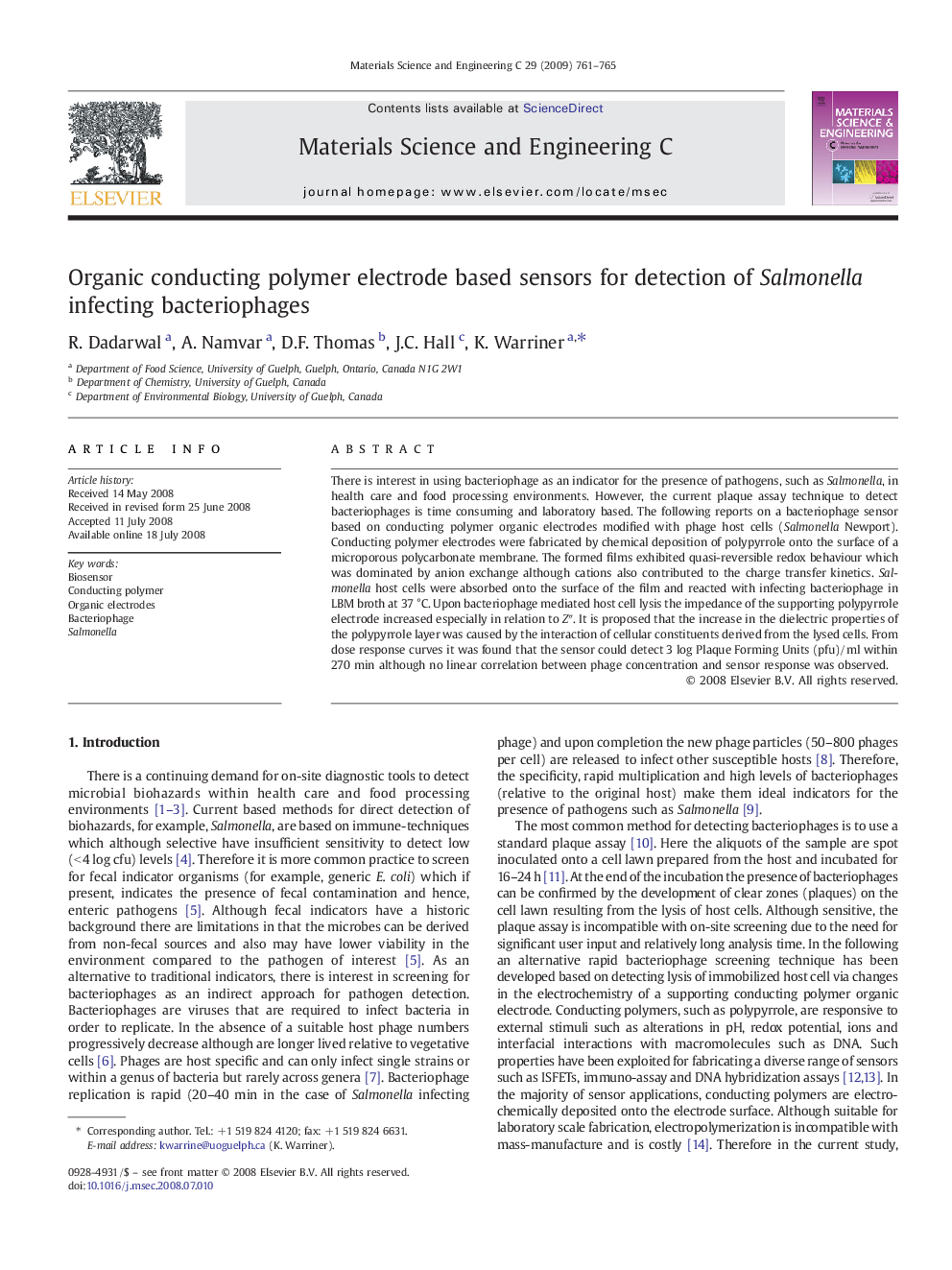| Article ID | Journal | Published Year | Pages | File Type |
|---|---|---|---|---|
| 1430142 | Materials Science and Engineering: C | 2009 | 5 Pages |
There is interest in using bacteriophage as an indicator for the presence of pathogens, such as Salmonella, in health care and food processing environments. However, the current plaque assay technique to detect bacteriophages is time consuming and laboratory based. The following reports on a bacteriophage sensor based on conducting polymer organic electrodes modified with phage host cells (Salmonella Newport). Conducting polymer electrodes were fabricated by chemical deposition of polypyrrole onto the surface of a microporous polycarbonate membrane. The formed films exhibited quasi-reversible redox behaviour which was dominated by anion exchange although cations also contributed to the charge transfer kinetics. Salmonella host cells were absorbed onto the surface of the film and reacted with infecting bacteriophage in LBM broth at 37 °C. Upon bacteriophage mediated host cell lysis the impedance of the supporting polypyrrole electrode increased especially in relation to Z″. It is proposed that the increase in the dielectric properties of the polypyrrole layer was caused by the interaction of cellular constituents derived from the lysed cells. From dose response curves it was found that the sensor could detect 3 log Plaque Forming Units (pfu)/ml within 270 min although no linear correlation between phage concentration and sensor response was observed.
